
This image combines the coronal view with the axial view and reflects the intimate relationships that the adrenals have with the kidneys as well as the great vessels of the abdomen. They literally have their fingers on the pulse of the aorta (red overlay) and the inferior vena cava (IVC) (blue overlay)
Ashley Davidoff MD Copyright 2018
39533
Aorta

The heart and lungs are positioned at the centre of all the organs in the body and they are understandably considered vital organs. Think of yourself as a little red cell within the vast and powerful environment of the circulatory system. Listen and feel the power of the pulse and the rush of all the rivers going back and forth, hither and thither, and around and around – imagine what goes on inside the system all the time – it is probably like walking through a rain forest with huge waterfalls, winding rivers and rivulets – a mixture of gushing power and calm meandering flow- but the colors are reds and blues instead of greens and yellows! Courtesy Ashley Davidoff MD 32059 code cardiac heart circulation artery vein introduction drawing Davidoff art
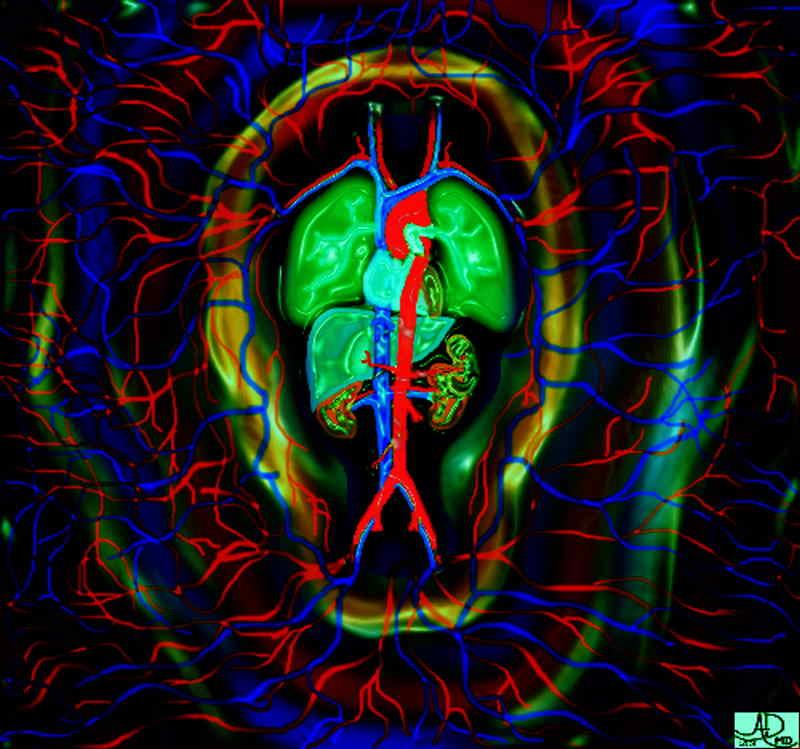
The heart and lungs are positioned at the centre of all the organs in the body and they are understandably considered vital organs. Think of yourself as a little red cell within the vast and powerful environment of the circulatory system. Listen and feel the power of the pulse and the rush of all the rivers going back and forth, hither and thither, and around and around – imagine what goes on inside the system all the time – it is probably like walking through a rain forest with huge waterfalls, winding rivers and rivulets – a mixture of gushing power and calm meandering flow- but the colors are reds and blues instead of greens and yellows! Courtesy Ashley Davidoff MD 32059d01 code cardiac heart circulation artery vein introduction drawing Davidoff art
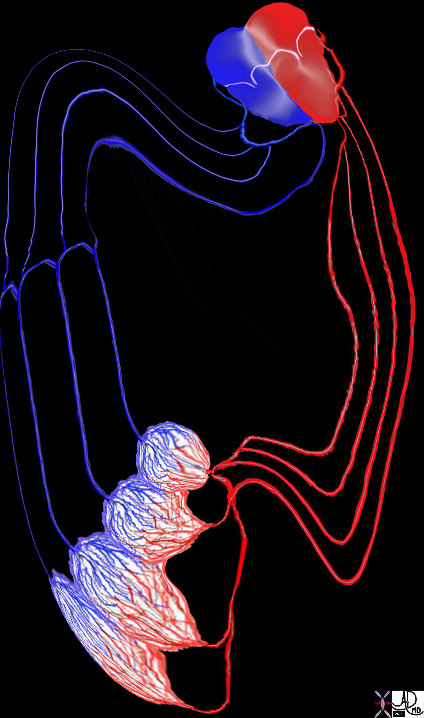
cardiovascular system heart cardiac artery arteries capillary capillaries arterioles venules veins negative forces positive forces road highway TCV the common vein applied biology Davidoff art Davidoff MD 32368b05.800
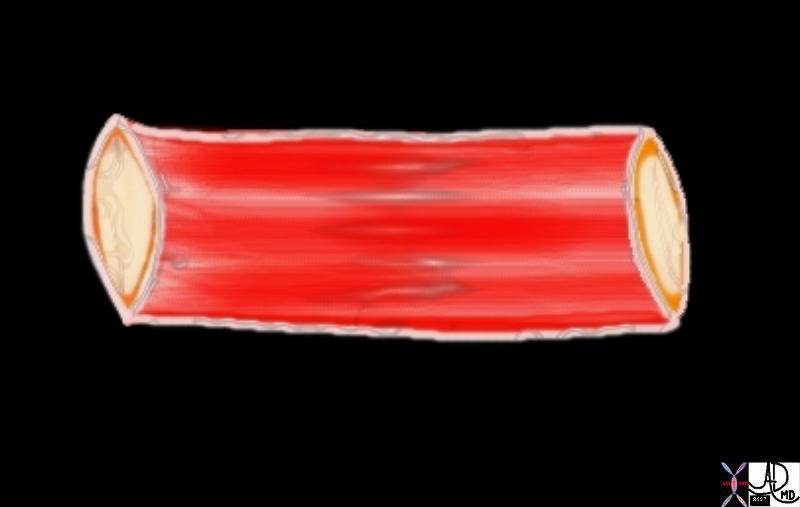
aorta flow principles structure laminar flow turbulent flow normal Davidoff Art Courtesy Ashley Davidoff MD 72845.800 72835.800 72839 72831.800 72845.800 49483b01
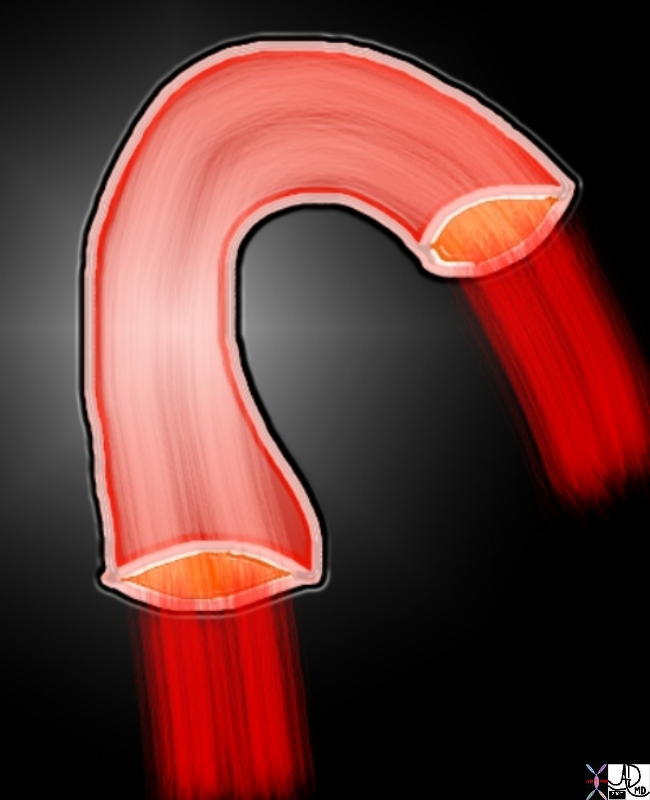
aorta flow principles structure laminar flow turbulent flow normal tube Davidoff Art Courtesy Ashley Davidoff MD 72831.800 72835.800 72839 72831.800 72845.800 49483b01
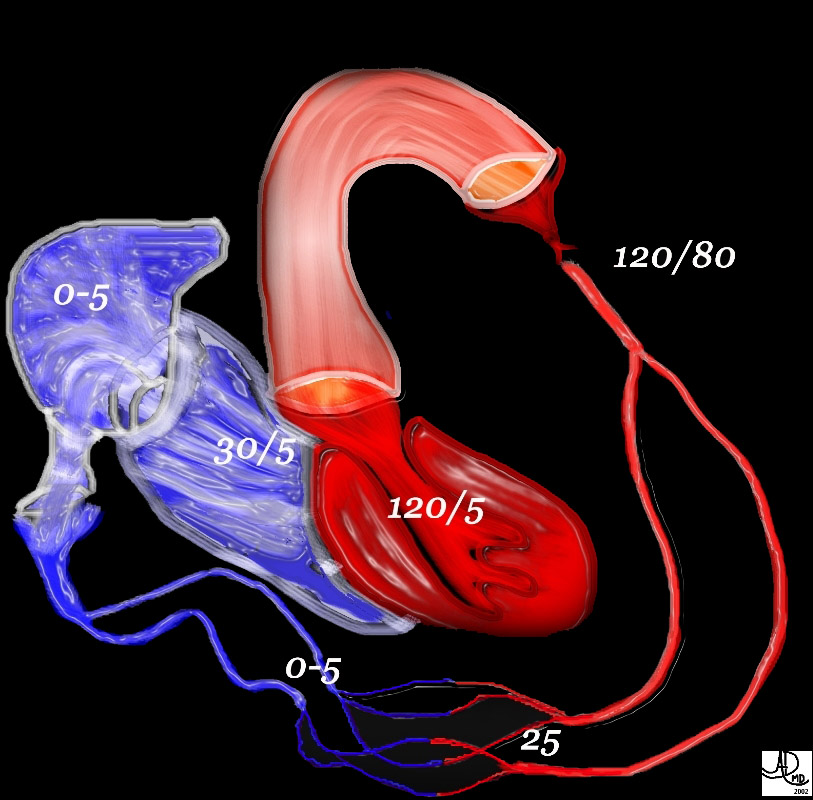
49483b01 heart cardiac LV left ventricle aorta aortic systemic circulation capillary capillaries arterioles venules right atrium RA right ventricle RV normal physiology pressures hemodynamics Davidoff MD Davidoff art
Major Forces
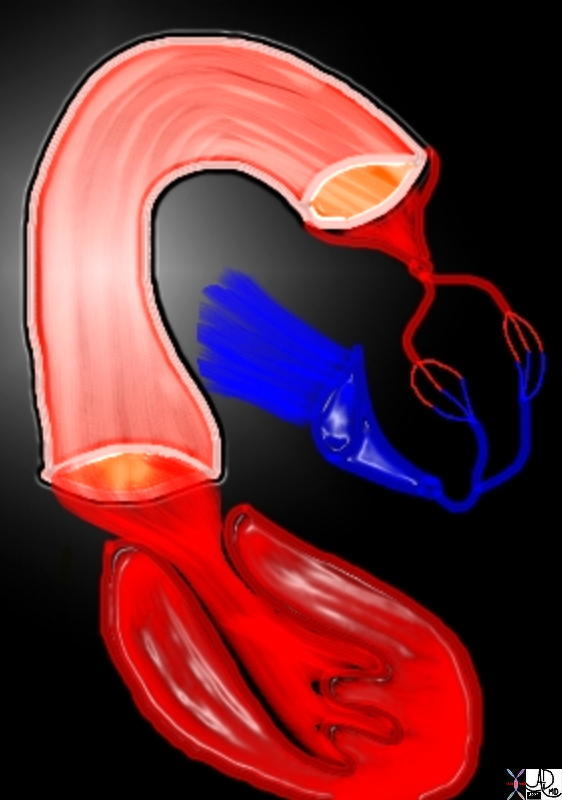 A Pump, Elasticity, Peripheral Resistance and a Sump
A Pump, Elasticity, Peripheral Resistance and a Sump
72839 Davidoff Art Courtesy Ashley Davidoff MD 72835.800 72839 72831.800 72845.800 49483b01
 Laminar flow
Laminar flow
This diagram reflects the laminar flow showing the almost parallel lines of flow that is characteristic of flow in the smaller tubes. Under resting conditions, laminar flow exists from the medium-sized bronchi onward down to the bronchioles. During exercise, the air flow is accelerated, and laminar flow may be confined only to the very small airways.
Courtesy Ashley Davidoff MD 42433b04.jpg
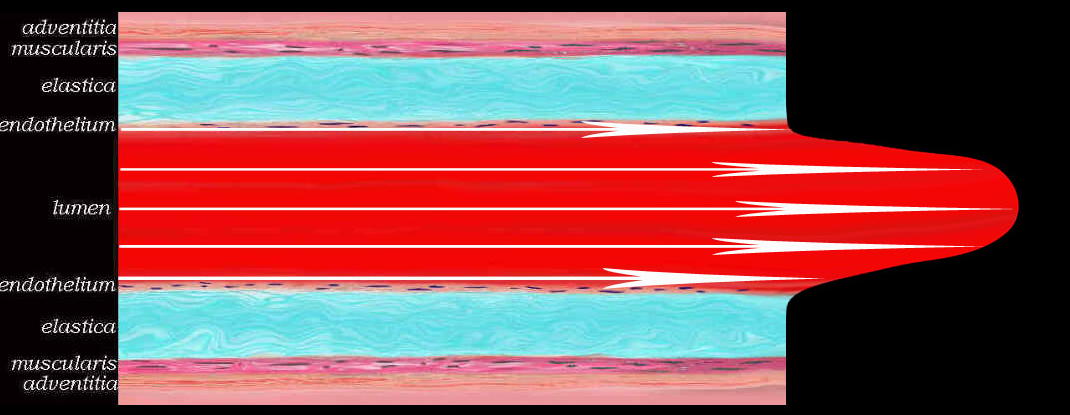 Parabolic Flow – Highest Velocity in Center and Lowest on the Endothelium
Parabolic Flow – Highest Velocity in Center and Lowest on the Endothelium
47678d05 aorta blood flow principles velocity parabolic Laminar flow is the normal condition for blood flow throughout most of the circulatory system. characterized by concentric layers of blood move in parallel down the length of a blood vessel. highest velocity (Vmax) isin the center of the vessel. lowest velocity (V=0) is along the vessel wall. T flow profile is parabolic occurs in long, straight blood vessels, under steady flow conditions. Davidoff art Courtesy Ashley Davidoff MD
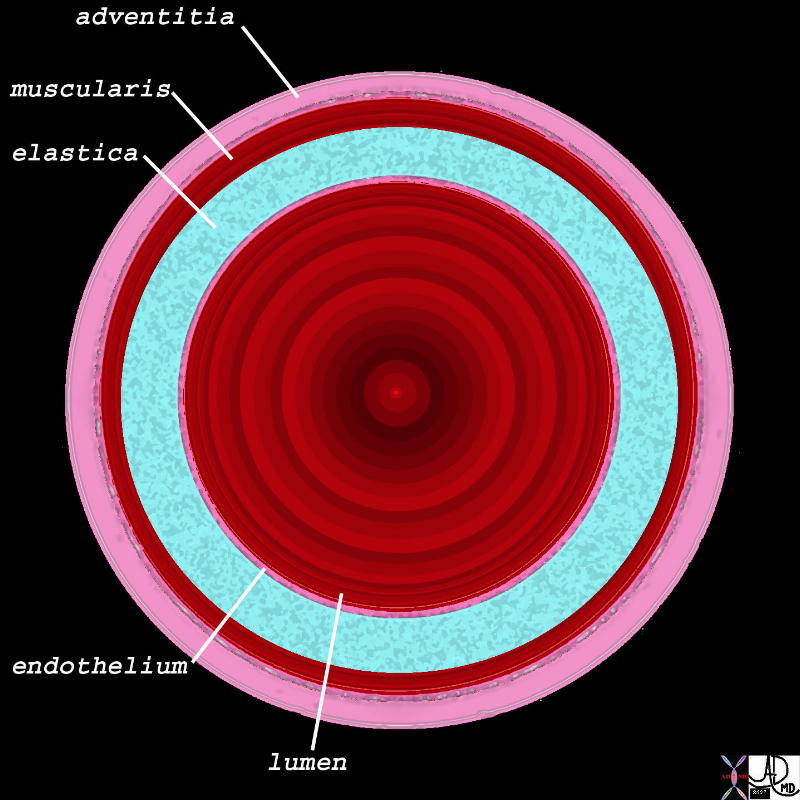 Parabolic Flow – Highest Velocity in Center and Lowest on the Endothelium
Parabolic Flow – Highest Velocity in Center and Lowest on the Endothelium
47678f12.800
aorta blood flow principles velocity parabolic Laminar flow is the normal condition for blood flow throughout most of the circulatory system. characterized by concentric layers of blood move in parallel down the length of a blood vessel. highest velocity (Vmax) isin the center of the vessel. lowest velocity (V=0) is along the vessel wall. T flow profile is parabolic occurs in long, straight blood vessels, under steady flow conditions. Davidoff art Courtesy Ashley Davidoff MD

Turbulent flow
This drawing shows the lines and circles of noisy turbulent flow, which is characteristic of flow in the larger airways.Courtesy of Ashley Davidoff M.D. 42434b07
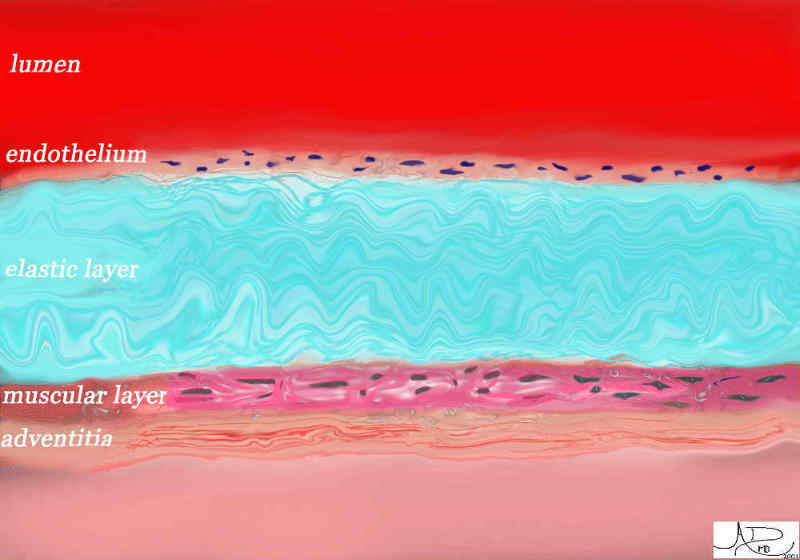 Histology – Key to Aortic Function is its Elastic Layer (teal)
Histology – Key to Aortic Function is its Elastic Layer (teal)
The Innermost Layer is the Endothelium and Outermost is the Adventitia
47678.800 Davidoff MD
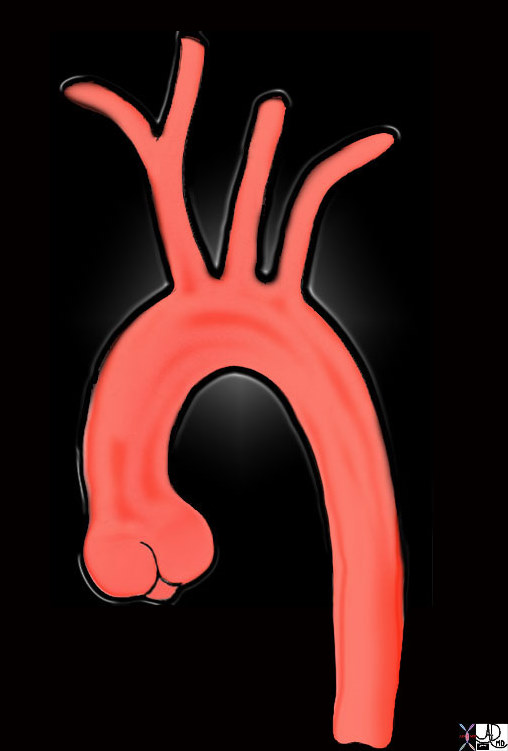
The Shape of Big Red
aorta aortic valve sinotubular junction ascending aorta aortic arch brachiocephalic artery left common carotid artery left subclavian artery descending aorta normal TCV Davidoff MD 47676
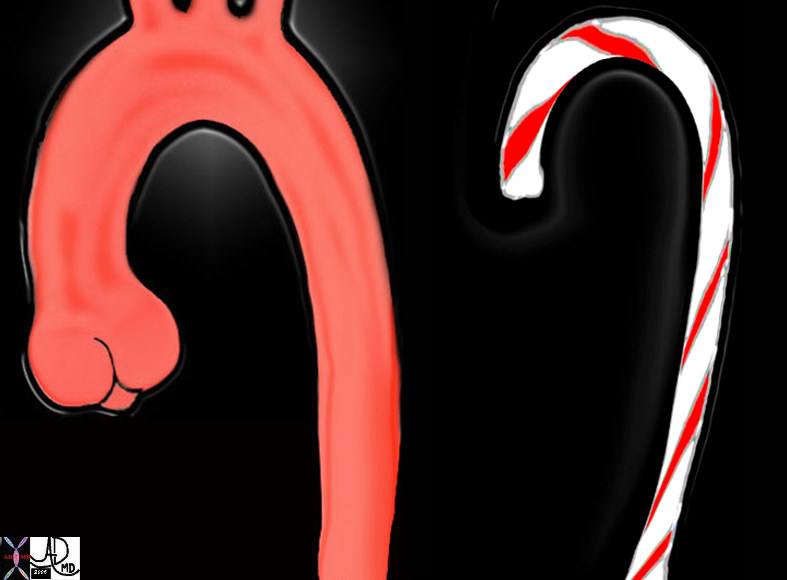 Candy Cane Shape of the Arch
Candy Cane Shape of the Arch
candy cane shape aorta aortic valve sinotubular junction ascending aorta aortic arch descending aorta normal 47677c03
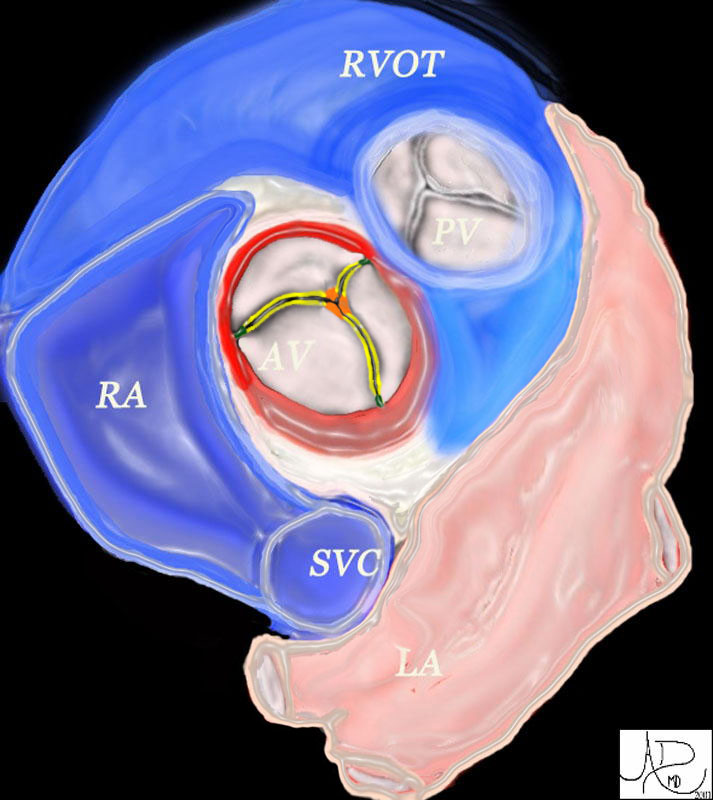 The Aortic Annulus (red ring) and Aortic Valve
The Aortic Annulus (red ring) and Aortic Valve
heart cardiac aortic valve aorta right atrium right atrial appendage left atrial appendage LAA RAA pulmonary valve right ventricular outflow tract left atrium LA RA RVOT anatomy normal position relations Davidoff art Davidoff MD 47681
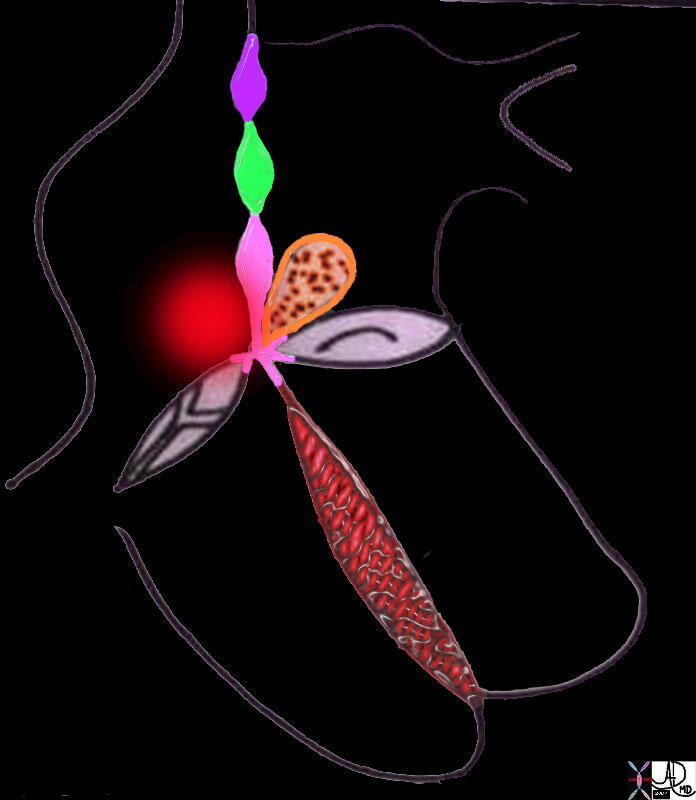
heart cardiac embryology conal septum line drawing right atrium left atrium left ventricle right ventricle interatrial septum interventricular septum atrioventricular septum crux of the heart embryology anatomy Davidoff drawing 01669b04 Davidoff MD
01667b04 01667b04 01667b06 01667b07 01667b09 01667b14 01669b03